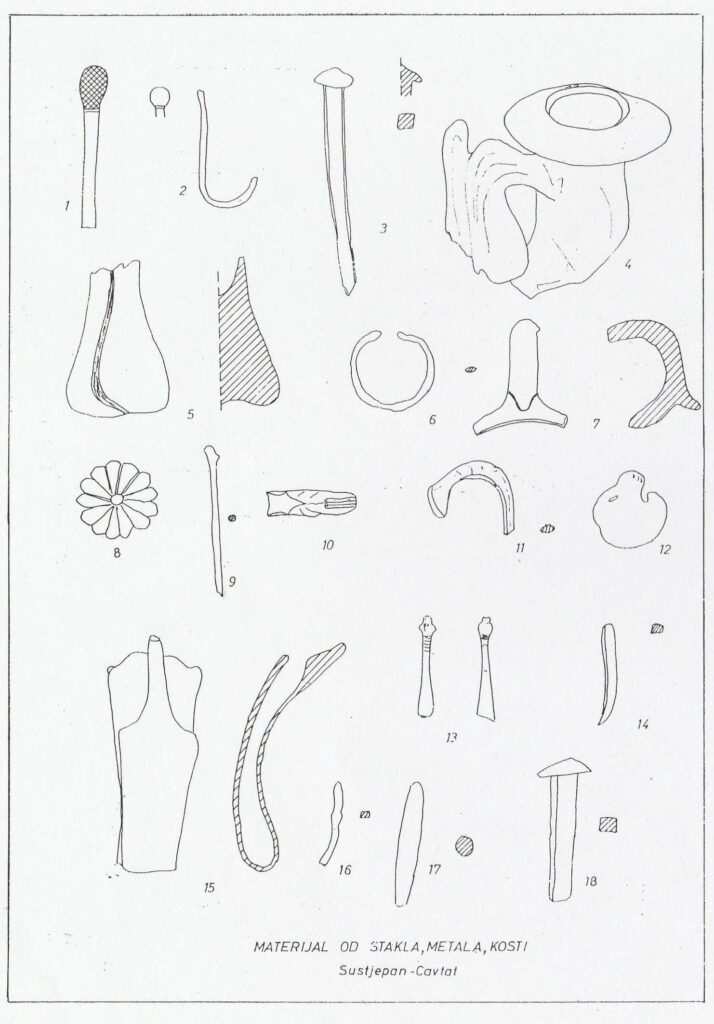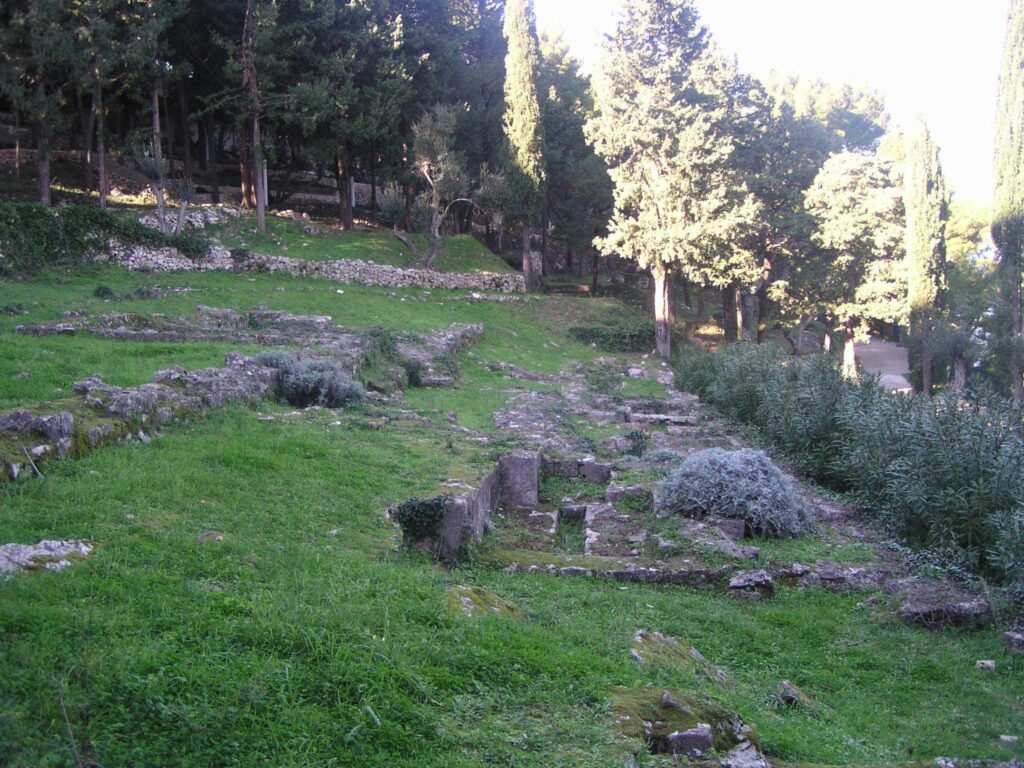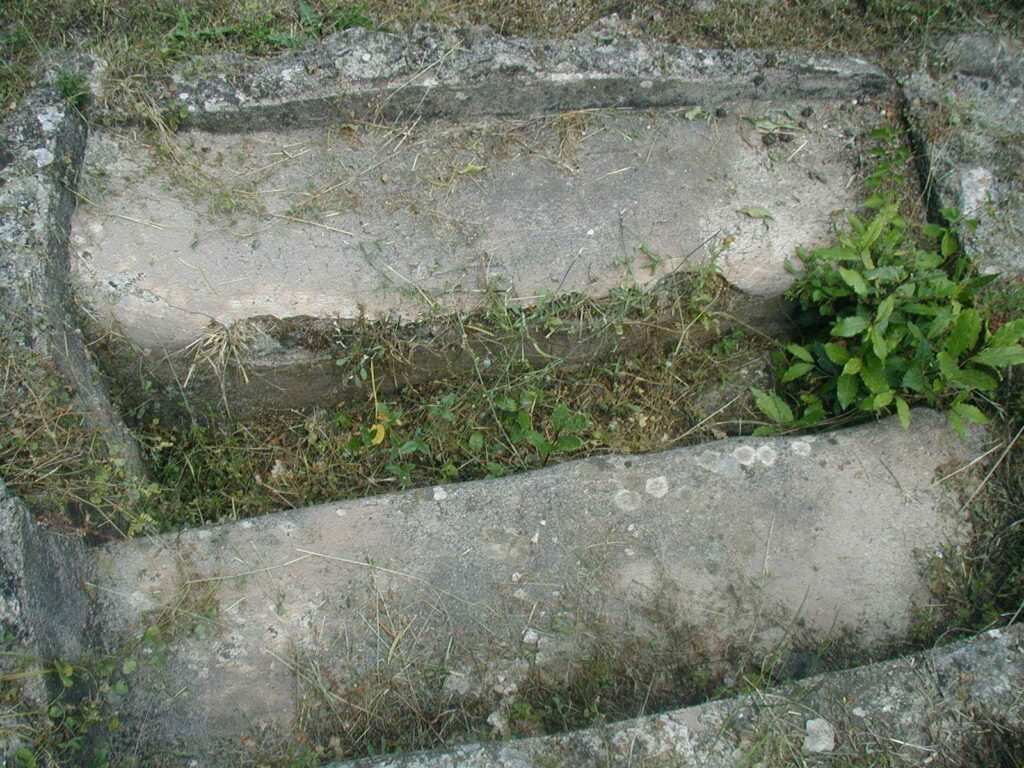The area of the Cavtat peninsula of Sustjepan is listed in the municipal urban plan as a particularly valuable natural landscape. Fortunately, excessive urbanization has not spoiled the view of Sustjepan from the opposite peninsula of Rat, nor from the Luka Bay, which is enclosed by these two peninsulas. The indented nature of the coast and the ease of access for ships are what contributed to the development of an important harbour in this area as far back as prehistoric times.
The toponym Sustjepan refers to a building, possibly a church, associated with St Stephen; however, no material remains or archival confirmations to support this thesis have been uncovered. While drawing the route of the Epidaurum aqueduct on his map, the famous archaeologist Arthur Evans marked one branch of the aqueduct as extending in the direction of Sustjepan. Archaeological research carried out in 1971, during the construction of the Hotel Croatia and its accompanying facilities, revealed the remains of an architectural complex, most likely a maritime villa or a public facility in charge of the port affairs.
Research conducted by Velika Dautova-Ruševljan in 1971 and 1972 revealed a complex architectural structure that descended towards the sea, following the slope of the terrain. Considering that the hotel construction was already at an advanced stage, the exact dimensions of the complex were never delineated. The building, stretching for 25 metres (82 ft) in the northeast-southwest direction, extended to the southwest. Unfortunately, further research was stopped by the already built sewage system.
The building was set over three terraced levels. Its width in the east-west direction is about 15 metres (49 ft). An apsidal (semicircular) structure forms the end of one of the levels in the eastern part. Inside the complex, at a level closer to the sea, the remains of a cistern with hydraulic mortar were uncovered. It is probable that this complex was opened by a portico, a passage with a series of columns, on the ground and the first floor. It had a hypocaust (thermal heating), the floor surfaces were decorated with mosaics, while the walls were decorated with wall paintings. Fragments of plaster with green, blue and red painted lines were found.
Over the course of centuries, the building underwent some reconstruction, but the basic architectural division remained intact. Fragmentary archaeological material (such as fragments of ceramics, amphorae, glass, etc.) indicates that this complex was built in the early imperial period, in the 1st century C.E. Other finds testify to the continuous use of the area through the following centuries, which is confirmed by the finds of bronze coins featuring the Roman emperors Gallienus, Aurelian, Constantine, Constans and Valens.
The findings of coins featuring the Justinian (527-565), his successor, Justin II the Younger (568-578), as well as those of later date featuring the Romanos III Argyros (1028-1034), indicate that this complex was used in some form in the Byzantine and early medieval times as well.

From: V. Dautova Rusevljan: Sustjepan u Cavtatu, Arheološki preglednik, 15.
Moreover, thirteen tombs were discovered in the western part of the complex facing the bay. These are mainly late antique burial plots made at a time after this architectural complex lost its original function. Tombs with skeletal burials were inserted between the existing walls on either east-west or north-south axis, depending on how they were incorporated into the earlier structure.
In the immediate vicinity of the complex, another tomb was discovered. A gold earring, two beads, twelve bronze coins featuring the likeness of Emperor Justinian and a few fragments of fine ceramics were found. Three more tombs with skeletal burials were uncovered to the north of this grave, in the vicinity of the pathway from the mainland.
The importance of the port of Epidaurum on the eastern Adriatic maritime route remained in Byzantine times. The reign of Justinian I was marked by the desire to restore the Empire to its former glory, in which he invested great construction efforts, but also carried out war actions. One of such campaigns in which Justinian tried to free Dalmatia from the Ostrogoths (535-537) is chronicled by the Byzantine writer Procopius of Caesarea, who mentions Epidaurum in the account in question. After the death of his strategist Mundus in the battle of Salona, Justinian ordered the general Constantianus to gather an army and attack Salona `on all fronts’. Constantian, having gathered his army in Epidamnos (Duress), anchored in Epidaurum with the entire fleet. It is possible that the burials discovered in the architectural complex on Sustjepan are witnesses of those times.



